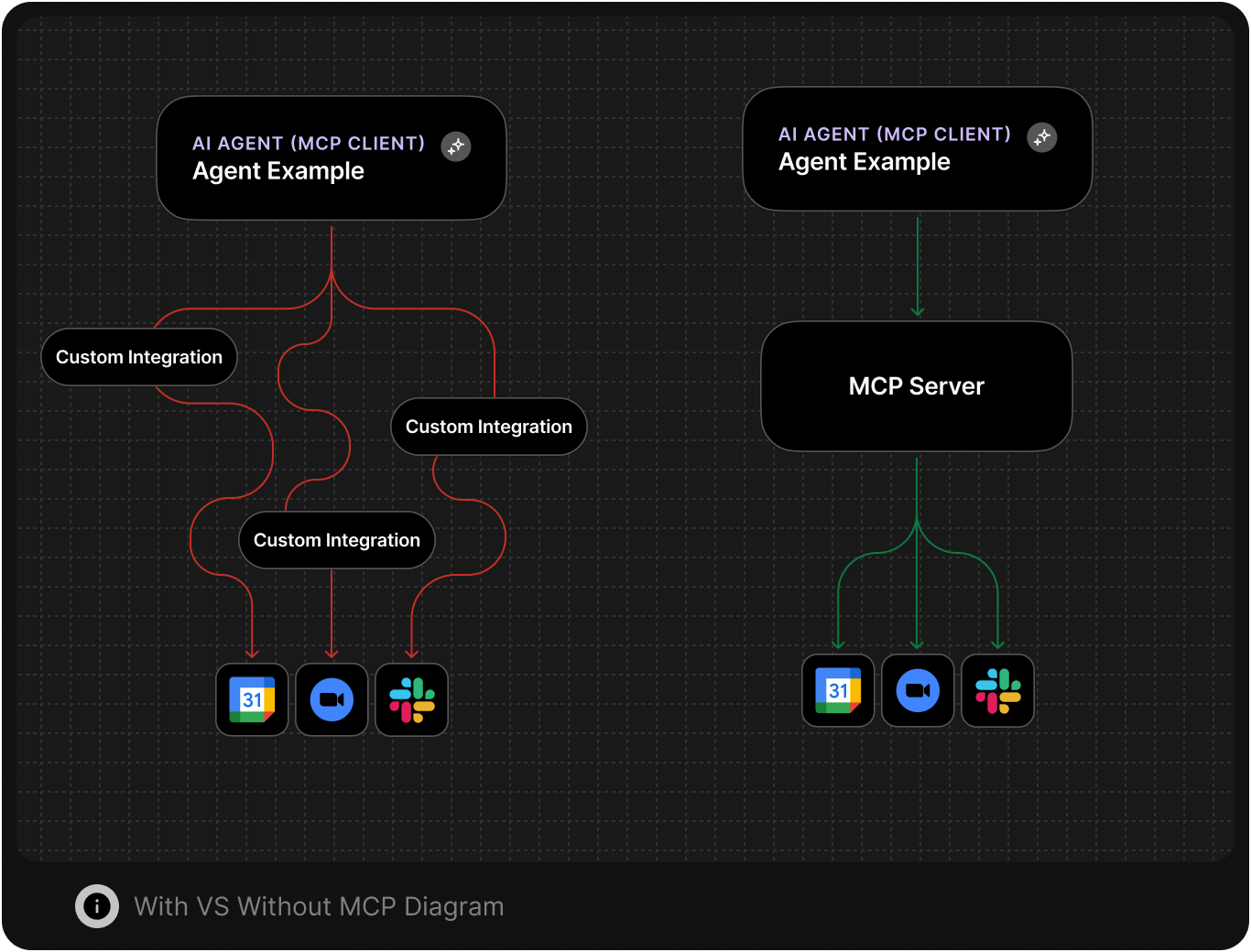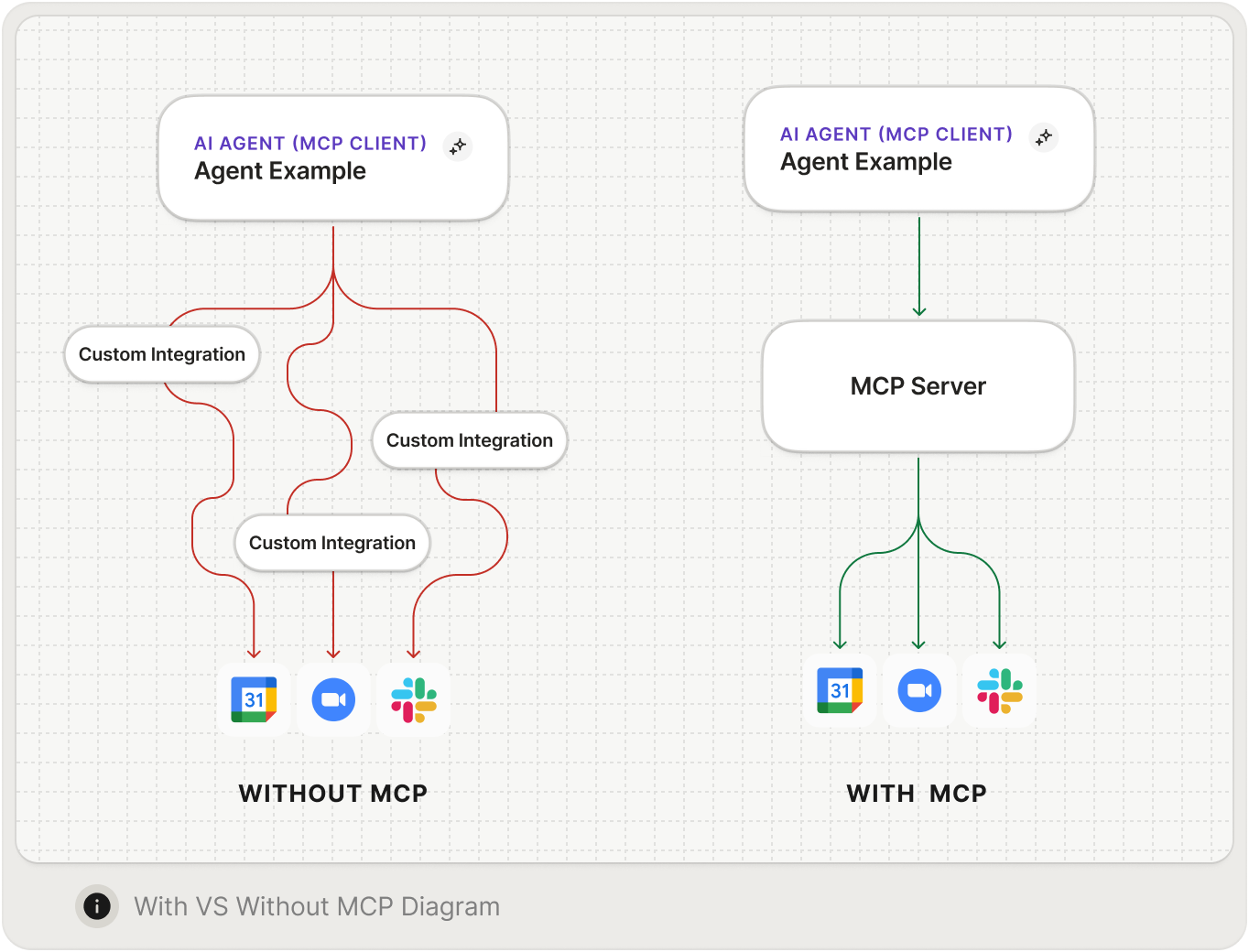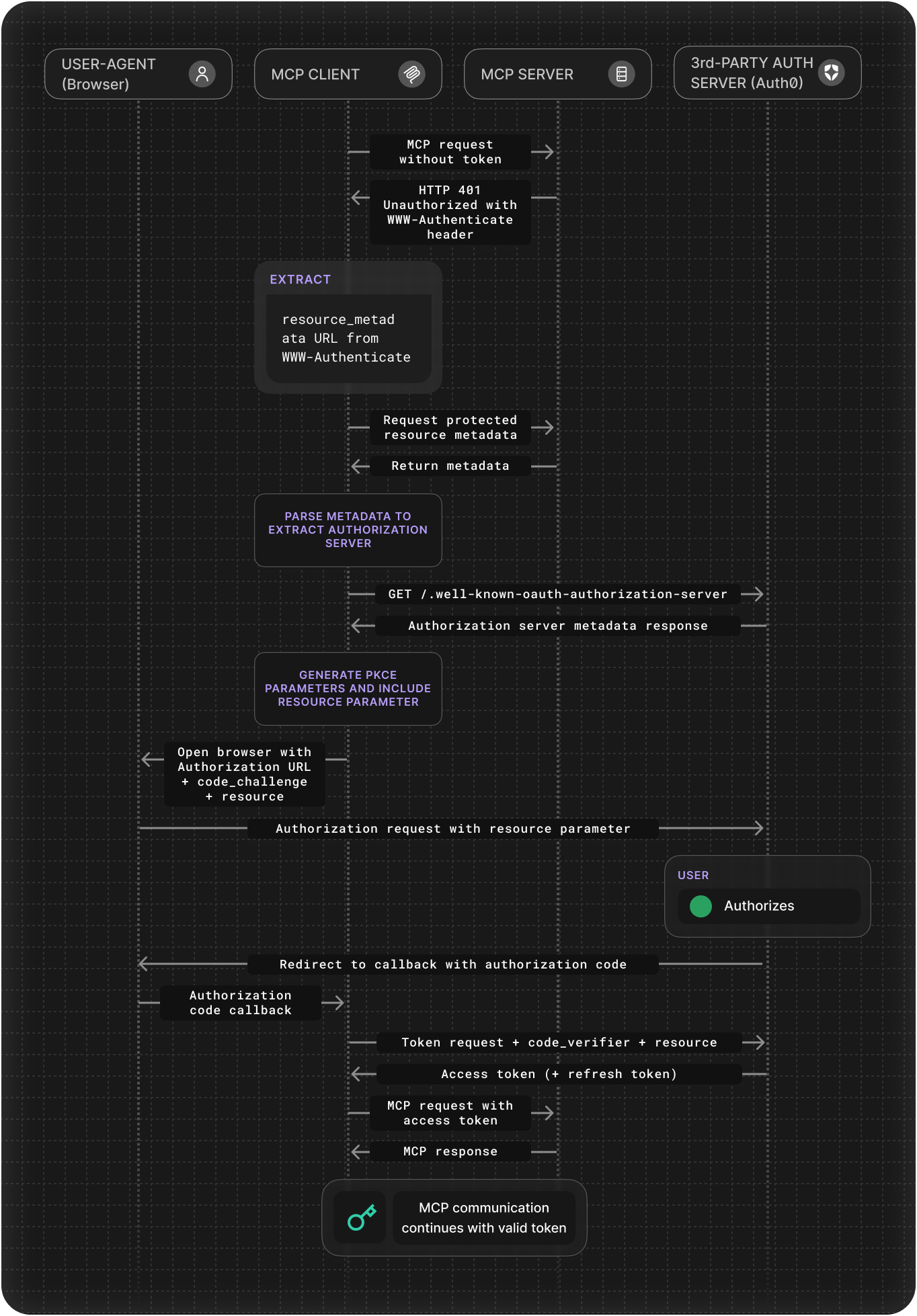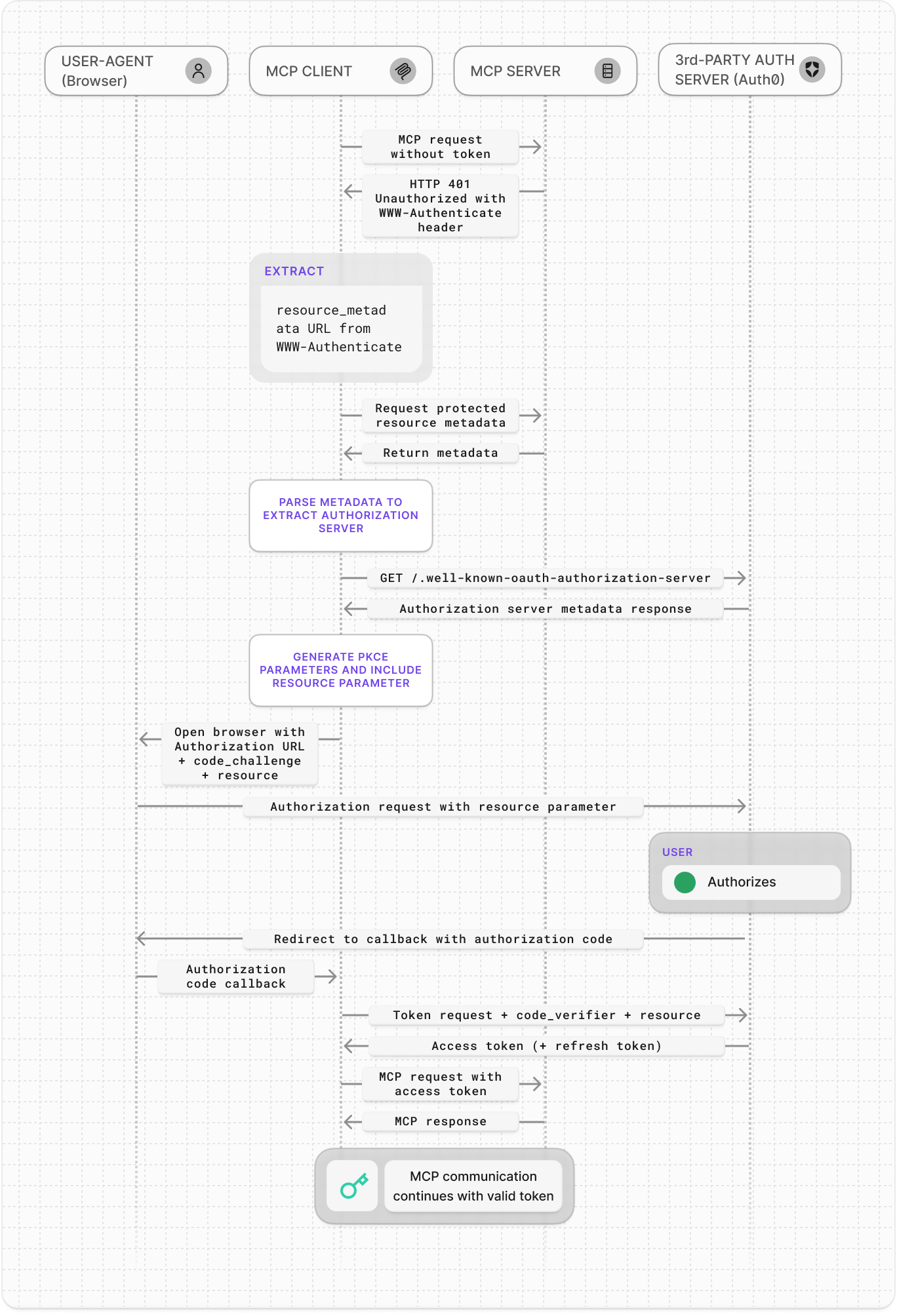Auth for MCP is currently available in Early Access and it’s available for Universal Login flows only.
Why authentication matters for MCP
- Secure and controlled access: Safeguards user data, manages who can use your MCP server and what they can do, and establishes a clear audit trail for activities performed through MCP servers and clients.
- Auditability: Provides a record of user activities for auditing and compliance.
Why use Auth for MCP?
MCP offers practical advantages: Standardized interfaces for LLMs to interact with and LLM-facing tools with rich context and metadata.

- Proof Key for Code Exchange (PKCE): PKCE mandatory security feature that mitigates authorization code interception and is handled automatically in Auth0’s SDKs.
- Metadata Discovery: Is mandatory per the MCP spec. Servers must advertise their OAuth endpoints. An Auth0 tenant provides an authorization server discovery document (
/.well-known/oauth-authorization-server) so MCP clients can dynamically find the required endpoints for authorization, token exchange, etc., reducing manual client-side configuration. - Dynamic Client Registration (DCR): DCR is crucial for scalability. It allows MCP clients (like a generic AI workbench) to programmatically register with your Auth0-secured MCP server via an API call. This avoids forcing users to manually create a client application in the Auth0 Dashboard for every new tool they want to connect.
- Delegating Authentication to a Third-Party Identity Provider (IdP): The specification supports delegating the user login process. You can configure your MCP server to use Auth0 as the trusted identity provider, centralizing user management and sign-on logic.
Authentication for users of MCP Servers
Auth0 is a flexible, drop-in solution to add authentication and authorization services to your applications. With Auth0, your users can log in with:- Username and password
- Passwordless and Passkeys
- Social Login (Google, Meta, Microsoft, GitHub, etc.)
- Corporate credentials and Single Sign On (SSO) for B2B AI applications
- And more.
- Multi-factor Authentication
- Attack Protection: Detect attacks and stop malicious attempts to access your application, such as blocking traffic from certain IPs and displaying CAPTCHA. This includes Bot Detection, Suspicious IP Throttling, Brute Force Protection, and Breached Password Detection.
- Highly Regulated Identity
- UI and login flow customizations via Actions and Forms
MCP Authorization flow with Auth0
Here is the standard OAuth authorization code flow when an MCP server uses Auth0 as its authorization server:1
The MCP client sends a request to the protected MCP server and receives HTTP
401 Unauthorized with a WWW-Authenticate header that indicates the protected resource metadata URL.2
The MCP client requests the resource metadata from the MCP server at the
/.well-known/oauth-protected-resource endpoint.3
The MCP client parses the metadata, selects an authorization server (Auth0) from the list, and then fetches its OAuth 2.0 Authorization Server Metadata from the
/.well-known/oauth-authorization-server endpoint. Dynamic Client Registration (DCR) can happen after receiving the metadata response.4
The client generates PKCE parameters and builds the authorization request, then opens the browser to the authorization endpoint.
5
The user then authenticates with Auth0 (using username/password, social login, or MFA). Auth0 redirects the browser to the MCP client’s registered redirect URI with an authorization code.
6
The MCP client exchanges the code at the token endpoint and Auth0 returns the access token completing the original OAuth flow.
7
After receiving an access token (and refresh token), the MCP client will use the access token to make authenticated calls to the MCP server’s tools.


MCP Authorization flow with Auth0
Enterprise Identity for MCP
For enterprise environments, you can use your organization’s identity provider and Single Sign-On (SSO) to authenticate users to your MCP servers. Auth0 connects to Okta, Entra ID, Ping, Google Workspace, and other IdPs so employees can authenticate with existing credentials before any MCP connection begins. This pattern provides:- Unified workforce authentication and MFA for MCP Servers
- Centralized access policy enforcement and device posture checks
- Consistent session context across all agent interactions

